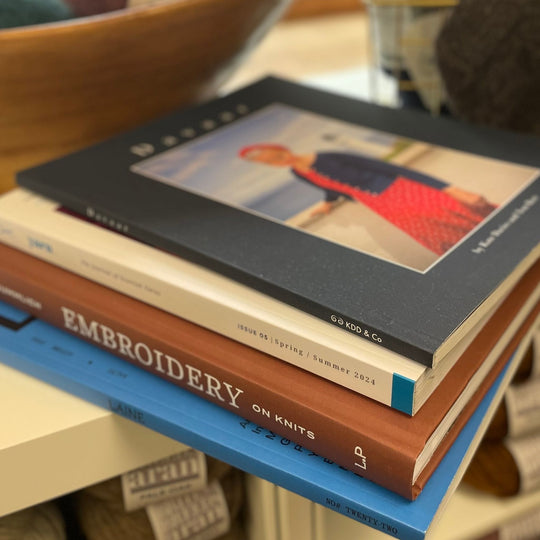Maker Q&A!
Maker Q&A is a monthly feature here on TWT blog. We'll answer questions from our customers and explore all things yarn, fiber & knitting in an effort to better understand our yarns and knitting to help us all grow as makers.
Question: Is there something specific that one does to cause pilling? Or does it just occur naturally on its own over time?
Pilling is the result of fibers pulling up out of the yarn due to contact and abrasion. A certain amount of pilling is quite normal and happens with both store bought and hand knit items. One way to address pilling is to use a fabric shaver, like the Gleener to periodically tidy up the garment.
Some yarns pill more than others. Fiber content, yarn structure and fiber preparation all play a role in how much a yarn pills. Understanding how these factors work together can be helpful when trying to estimate how a yarn will hold up in your project and whether you can expect a lot of pilling.
Simply put, yarn is made by taking fibers, drawing them apart and adding twist. How much twist a yarn has contributes to how much abrasion it can withstand. A loosely spun yarn is more susceptible to pilling because the individual strands of fiber are under less tension and are able to come loose. Adding more twist and plies can increase the hardiness of the yarn.
Fiber content and yarn structure (single, 2-ply, 3-ply etc) also contribute to how much a yarn will pill. Knowing whether the wool used in the yarn is a fine, medium or coarse breed wool can be helpful in choosing the right yarn for your project. The more plies a yarn has the more each individual ply is protected, because less surface area of each ply is exposed. That added strength will help it stand up to abrasion and will help it pill less.
Fiber preparation also contributes to how a yarn will wear and how much it will pill. Some yarns are worsted spun, meaning that all the fibers are aligned in the same direction during the spinning process. Other yarns are woolen spun, meaning that the fibers are carded and mixed up prior to spinning. Worsted spun yarns can pill more since those fibers are just laying flat next to each other making it easier for the individual fibers to work loose. Woolen spun yarns with their fibers going in multiple directions means that smaller areas of each individual fiber are exposed to abrasion and tend to pill less because of it.
Another good way to get a sense for how much a yarn will pill is to knit up a swatch and carry it around. Throw it in your purse or tuck it under your bra strap. A perk to tucking it into your bra strap is that you’ll also learn whether or not you find a particular yarn soft enough to wear next to skin. Keep in mind that if you knit a swatch and after toting it around it has an abundance of pills that you can’t live with, that yarn might be best for a project that would get less abrasion, like a shawl. It doesn’t mean it’s not a good yarn, it just means you need to match it to the right project. There are so many yarns and so much possibility in them!
There are a number of excellent articles and videos which discuss the topic of yarns, hardiness and pilling. One we recommend if you’re interested in learning more can be found here on the Interweave website.
Maggie Nichols is an avid knitter and hand spinner as well as an employee of TWT. She can be found on Ravelry & Instagram as Nestingmag. If you have a question you'd like answered on the blog, email us at info@thewoollythistle.com with Blog Question in the title.




























Hi Corrine,
Any chance you may carry Norwegian Hillesvag yarns in the future?
(ie Hifa 2 or Tinde Pelsullgarn)
Thank you. I always look forward to and enjoy your videos.
Lucy
Leave a comment